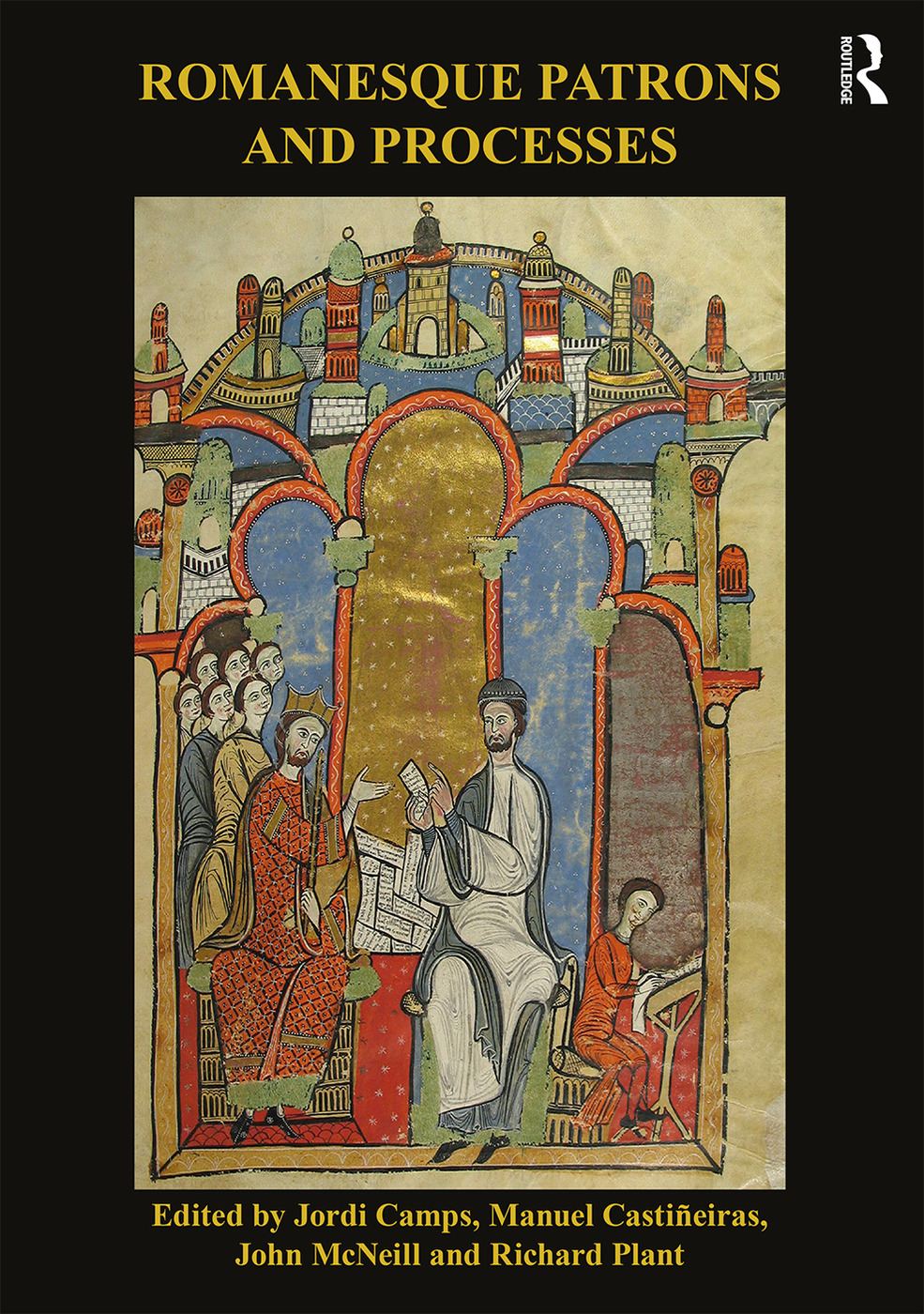The twenty-five papers in this volume arise from a conference jointly organised by the British Archaeological Association and the Museu Nacional d’Art de Catalunya in Barcelona. They explore the making of art and architecture in Latin Europe and the Mediterranean between c. 1000 and c. 1250, with a particular focus on questions of patronage, design and instrumentality across Latin Europe and the Mediterranean.
No previous studies of patterns of artistic production during the Romanesque period rival the breadth of coverage encompassed by this volume – both in terms of geographical origin and media, and in terms of historical approach. Individual essays range of topics range from case studies on Santiago de Compostela, the Armenian Cathedral in Jerusalem and the Winchester Bible to reflections on textuality and donor literacy, the culture of abbatial patronage at Saint-Michel de Cuxa and the re-invention of slab relief sculpture around 1100. Another important feature of the volume are those papers that attempt to recover the procedures that coloured interaction between artists and patrons – a serious theme in a collection that opens with ‘Function, Conditionality and Process in Anglo-Norman Architecture’ and ends with a consideration of ‘The Death of the Patron’.
Table of Contents
Chapter 1: Richard Gem, Function, Conditionality and Process in Anglo-Norman Architecture
Chapter 2: Arturo Carlo Quintavalle, Before the Communal Age: Patronage and Reform in the Attonidi Domains
Chapter 3: Bruno Klein, Romanesque Cathedrals in Northern Italy – Building Processes between Bishop and Commune
Chapter 4: Eduardo Carrero Santamaria, Episcopal Patronage in the Reform of the Catalan Cathedral Canonries during the First Romanesque Period: A New Approach
Chapter 5: Javier Martínez de Aguirre, The Role of Bishops and Kings in the Introduction of Romanesque Art in Navarre and Aragon
Chapter 6: Jens Rueffer, From Peláez to Gelmírez: The Problem of Art Patronage at the Romanesque Cathedral of Santiago de Compostela
Chapter 7: Eric Fernie, Patronage, Romanesque Architecture and the Languedoc
Chapter 8: Armen Kazaryan, The Armenian Cathedral of Saints James in Jerusalem: Melisende and the Question of Exchange between East and West
Chapter 9: Claude Andrault-Schmitt, Grandmont and the English Kings
Chapter 10: Neil Stratford, The Hospital, England and Sigena: A Footnote
Chapter 11: Christopher Norton, King Henry II, St Hugh, and the Winchester Bible
Chapter 12: Manuel Castiñeiras, Patrons, Institutions and Public in the Making of Catalan Romanesque Art
Chapter 13: Anna Orriols, The Artistic Patronage of Abbot Gregorius at Cuixà: Models and Tributes
Chapter 14: Joan Duran-Porta, A Limousin Ciborium in Medieval Catalonia
Chapter 15: Verónica Abenza, The Jaca Ivories: Towards a Re-evaluation of 11th-Century Female Patronage in the Kingdom of Aragon
Chapter 16: Melanie Hanan, The Aemilian Casket Reliquary: A Product of Institutional Patronage
Chapter 17: Esther Lozano-López and Marta Serrano-Coll, Patronage at the Cathedral of Tarragona: Cultic and Residential Space
Chapter 18: Carles Sánchez, An Anglo-Norman at Terrassa? Augustinian Canons and Thomas Becket at the End of the 12th Century
Chapter 19: Rose Walker, Agency and the Re-invention of Slab Relief Sculpture at San Isidoro de León c. 1100
Chapter 20: Carlotta Taddei, Patron and Liturgy: The Liturgical Setting of San Martino in Lucca after 1070
Chapter 21: Robert Maxwell, The ‘Literate’ Lay Donor: Textuality and the Romanesque Patron
Chapter 22: Wilfried E. Keil, Remarks on Patron Inscriptions with Restricted Presence
Chapter 23: Hugh Doherty, The Bridekirk Font: A Twelfth-Century Mason and His Patrons
Chapter 24: Anne Leturque, The Role of Painter and Patron in the Work of a Wall or Panel Painting in the Romanesque Age
Chapter 25: Shannon L. Wearing, The Death of the Patron: The History and Mystery of the Liber Feudorum Maior
